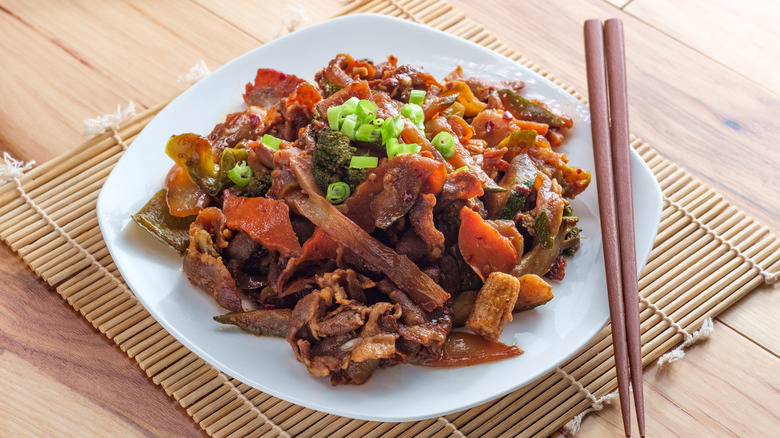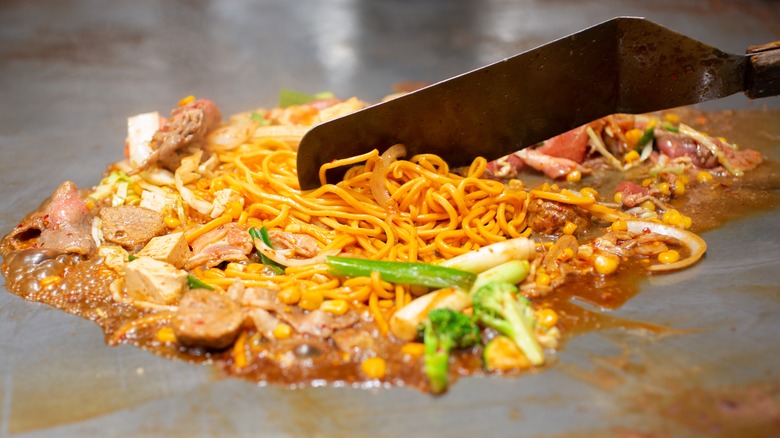Why The Name Mongolian BBQ Has Been Misleading You
The all-you-can-eat experience at a Mongolian BBQ is different from what you would get at any buffet restaurant. Instead of choosing from a selection of prepared dishes, diners begin by selecting raw meats, uncooked vegetables, as well as sauces, before the ingredients are passed to a cook who then stir-fries the ingredient selection on a giant grill. And if you were to ask what the origins of the Mongolian barbecue style of cooking might be, just about every restaurant will be happy to tell you that the flat-top grill style of cooking was inspired by Mongolia's legendary ruler Genghis Khan, who invaded China during the 13th century. It is said that Khan's soldiers would sling their round shields over the campfire and use them as giant pans to cook bits of beef and mutton. It is also said that vegetables weren't added to the mix until much later since they were considered to be a twist added by the Chinese.
Romantic and widespread though this tale might be, it is also a myth whose actual origins are unclear, since historians say the Mongolian diet was made up of dairy, including butter, cheese, and yogurt, and boiled meat. So if Mongolian BBQ isn't actually from Mongolia, where did it come from?
Mongolian barbecue was born in Taiwan
The answer to that lies about 1,800 miles south of Mongolia, and in Taiwan, home to the late Chinese comedian, Wu Zhaonan. He was born in the Chinese capital, Beijing, but moved to Taiwan along with the Nationalist Army when they fled China in 1949. To make ends meet, Wu opened a restaurant named Kao Rou Xiang or Fragrant Grilled Meat, which offered Beijing-style BBQ, in which meats are marinaded in a sauce made with soy sauce, cooking wine, sugar, sesame oil, and ginger before they are cooked on a small, heated iron plate. Political sensibilities at the time meant that Wu could not name his restaurant after the method that inspired it, so he came up with the name "Mongolian BBQ" instead.
Mongolian BBQ's iconic all-you-can-eat format was shaped by the economic mood of the day. Wu found no takers for his a la carte offer, so he dropped the price to a dollar and turned his menu into a buffet.
But it didn't stop there. It wasn't long before copycat restaurants began springing up, using the name of Genghis Khan in their branding, which helped push the story along. From there, it was only a matter of time before John C. Lee brought the concept to the United States after he emigrated in 1966, and opened a chain of restaurants called Colonel Lee's Mongolian BBQ in 1969. It would become the first restaurant of its kind in Los Angeles. It was certainly not the last however, and since then Mongolian BBQ (i.e., Taiwanese BBQ) has spread even further.

